Don't wanna be here? Send us removal request.
Photo
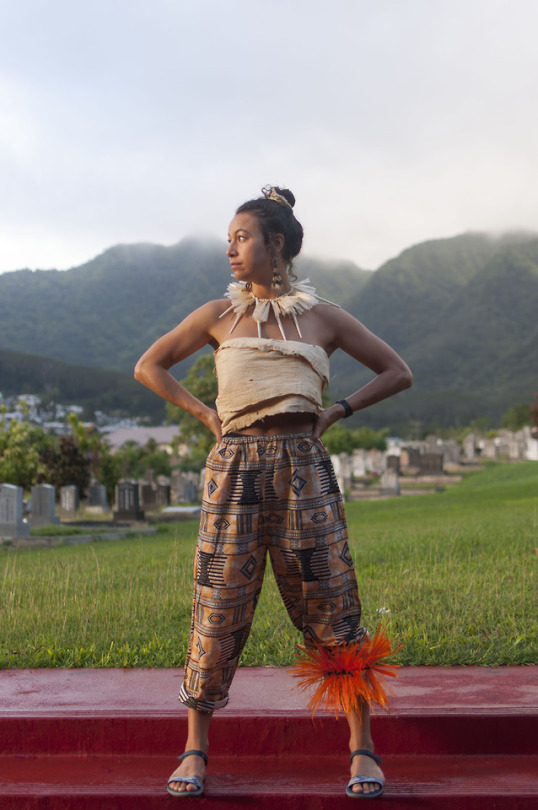
Wearing wauke made by me and whau whakakai by Pati. Public opening of the Honolulu Biennial.
4 notes
·
View notes
Photo

Myself and Kaliko Spencer beating together in Maui. Notice the colours, the nuances, the differences, the tools. It takes a lot to make kapa. The right people are essential as the right tools and the right plants. Its a careful balancing act of energy, water, and time.
4 notes
·
View notes
Photo

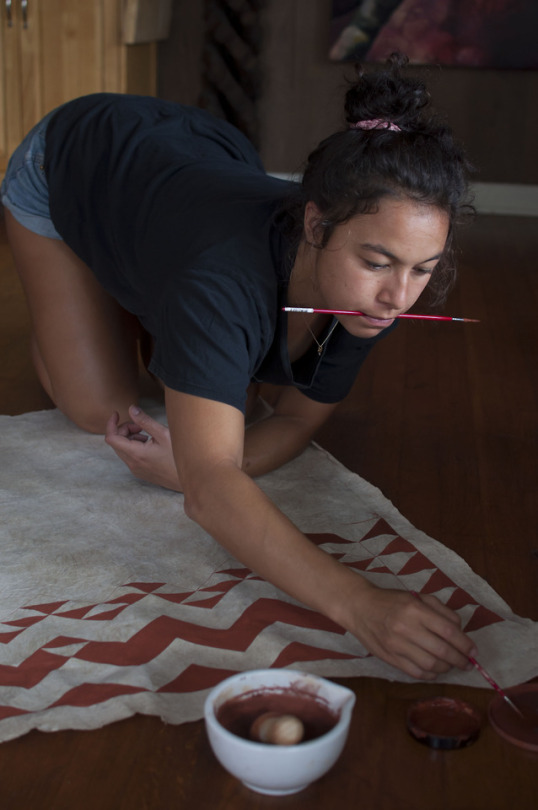
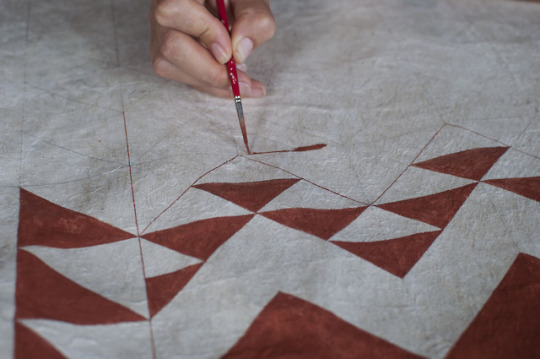
KOKOWAI | Why do I paint with kokowai?
Kokowai is red earth, found in veins, running through Papatūānuku, Earth Mother. Kokowai contains the essence of creation. From the red fertile soils of Kurawaka, our first wahine, Hine-ahu-one was moulded. Between Her thighs we were created.
I love using kokowai. It is life giving. Generous. Sovereign. Smooth. Strong. Vibrant. Decisive. Clear. What could be more connected to these ancestral earth ties than the stuff we are made of.
Art is more than just aesthetic. Just like we are conscious of the thoughts we project and words we speak. We must think about the materials we use and images we make. I am always asking why, why am I choosing this material, where is it from, what does it say, what does it want to become. By reflecting and learning from our own decision making processes we can refine, simplify and strengthen the ideas we are trying to convey and the philosophy we are perpetuating through our art.
BE A CONSCIOUS ARTIST
2 notes
·
View notes
Photo
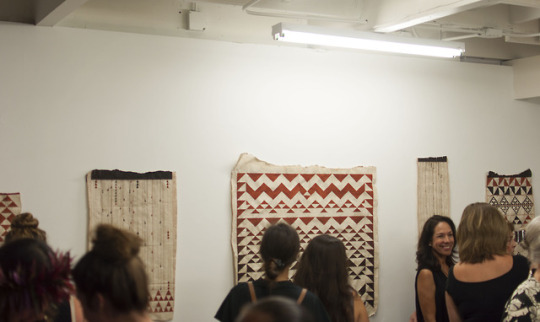
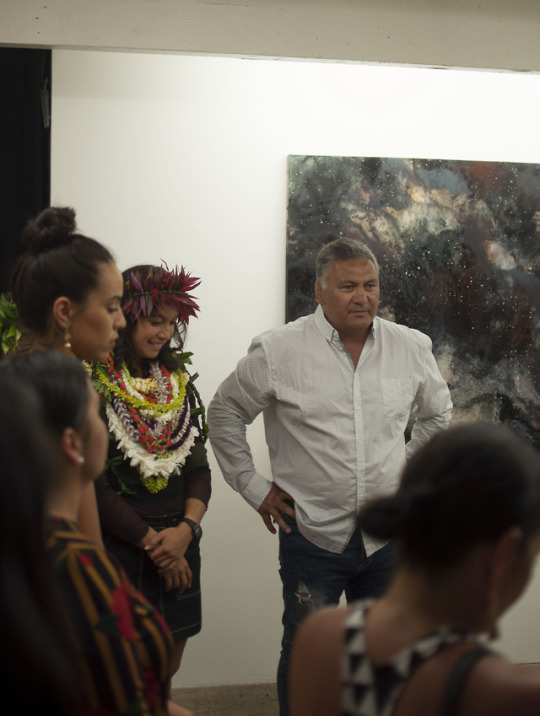

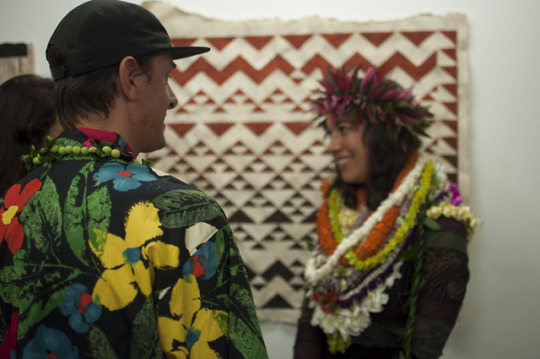
The Opening
Totally overwhelmed and feeling so blessed that we had such an amazing Opening last night for Te Wheiao. The space was filled with incredible people, thankful to have whānau from home present as well as my 'ohana from here. Overflowing with aloha and realizing more and more that it is the people, the relationships, the connections you make that truly create the positive ripples. So mahalo to everyone, those who came last night, those who helped, those who sang, those who sent their best wishes, those who shared the work and those who were there with us ā wairua. We felt it all, all night. Kei te kii rawa te ngakau.
0 notes
Photo
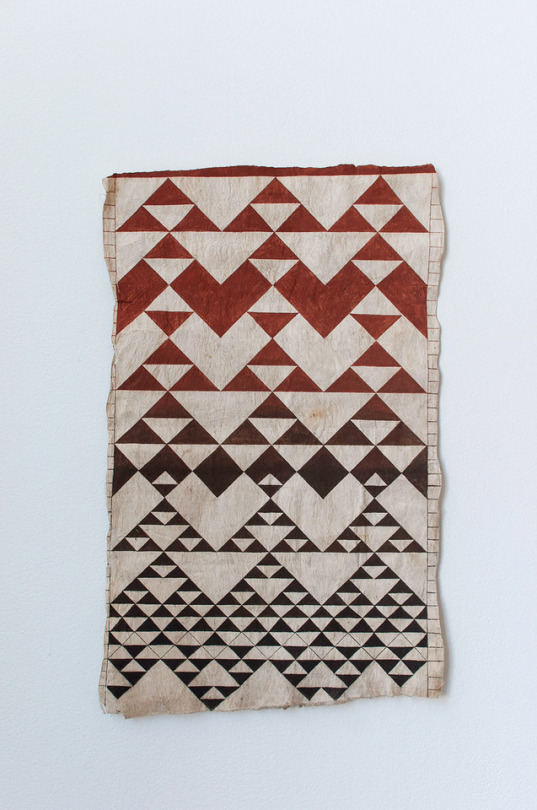



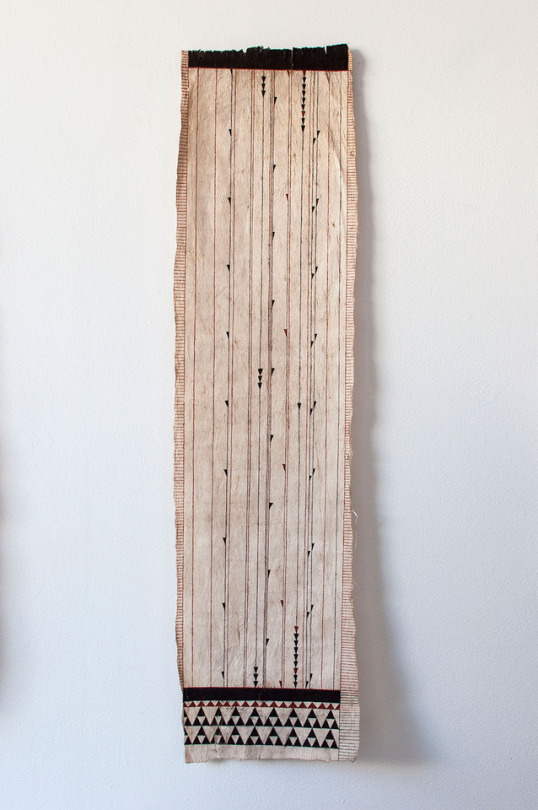

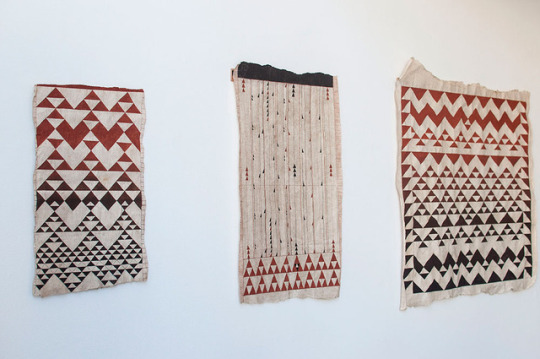

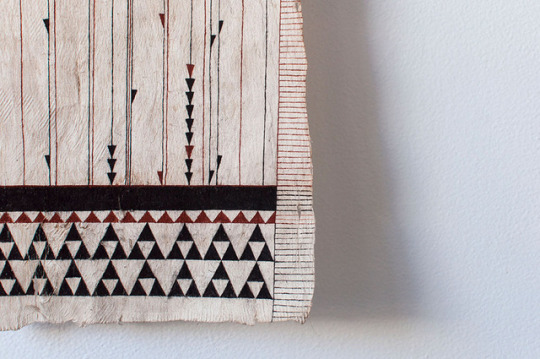

Te Wheiao
I've been dreaming of this moment for five years. • I've been dream of painting on a large piece of kapa since I first started learning. • I've been dreaming of my own exhibition with a series of kapa pieces I've beaten and marked. • Good things take time and commitment to seek out that knowledge and find your teachers. Here it is. Te Wheiao. All pieces have sold/gifted except Te Wheiao II - proceeds went towards my upcoming sail on Haunui from Norfolk back to Aotearoa.
Works List (all prices are USD)
Te Wheaio I, 2017 Kapa /Aute/Paper Mulberry, Alae/Earth from Kauaʻi, Kokowai/Burnt Earth from New Zealand, $900
Kokowai, 2018. Digital Video, Kapa/Aute/Paper Mulberry NFS
ARORANGI (FOCUS ON THE SKY for finding diretction), 2018. Kapa /Aute/Paper Mulberry, Alae/Earth from Kauai, Kokowai/Burnt Earth from New Zealand, $1,200 Kapa beaten by Verna Takashima and painted by Nikau Hindin
Taparau , 2017. Kapa /Aute/Paper Mulberry, Alae/red Earth from Kauaʻi, Kokowai pango/Burnt Earth from New Zealand, $1,200
Ke Kā O Makaliʻi (The Bailer of Matariki (Pleidies)), 2018. Kapa /Aute/Paper Mulberry, Alae/Earth from Kauai, Kokowai/Burnt Earth from New Zealand, $900
Te Wheaio II, 2018. Kapa /Aute/Paper Mulberry, Alae/Earth from Kauai, Kokowai/Burnt Earth from New Zealand, $3,200
1 note
·
View note
Photo

The show is a collaboration between myself and my close friend Nanea Lum. We met in Painting class here at UH five years ago and have remained close ever since, intermingling and exchanging our Maori/Hawaiian cultural roots and creating a new wave in the wake of our ancestors. Born on the same day, we are like Nanamua and Nanahope, the sister stars Gemini, on parallel paths, always rising and setting together. The power of bringing together indigenous peoples is reflected in the ease and excitement we find in collaboration. I have been strengthened by her people and the kapa making tradition here in Hawai'i and I know she draws strength from the cultural grounding in Aotearoa. Aloha atu, aloha mai. In our exhibition I will be showing kapa I have beaten and painted with earth pigments and Nanea is showing her oil paintings that explore the process of making kapa. Te Wheiao is the space between the world of darkness and the world of light. When sky Father and earth Mother were separated there was still a period of time before the world as we know it. Creation energy was stirring and their children were between chaos and calm- creating the laws of nature. The stars, sun and moon were still being hung. It is the dawn of time. Te Wheiao is important to us because it reflects where we are now- still partially in a state of chaos, learning and researching- we are almost breaching into the world of understanding but not quite yet. Nanea is about to enter into her Masters and I am about to return home- to take back the tools I have learned here about kapa making.
1 note
·
View note
Photo
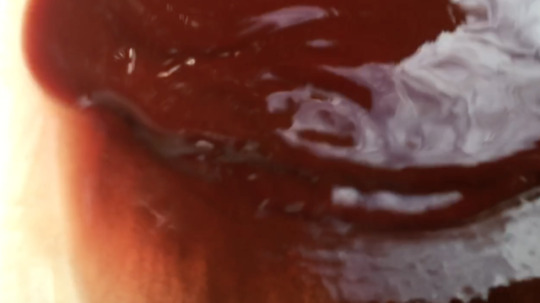
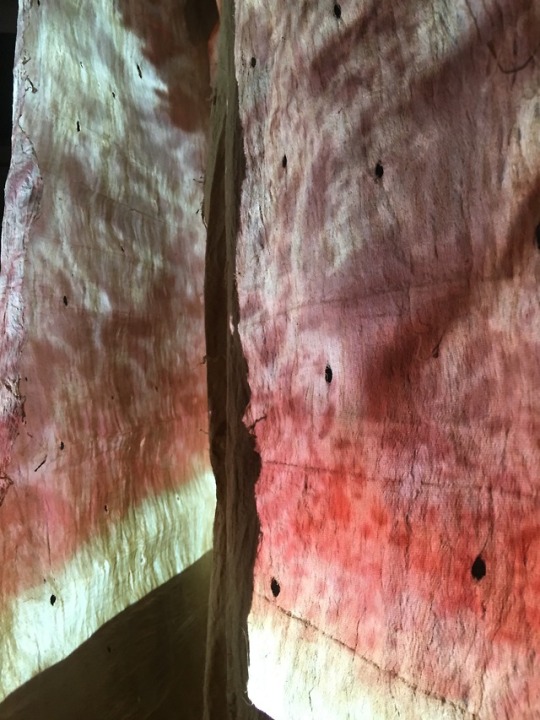
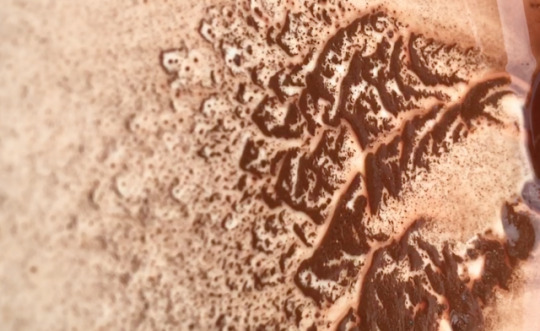
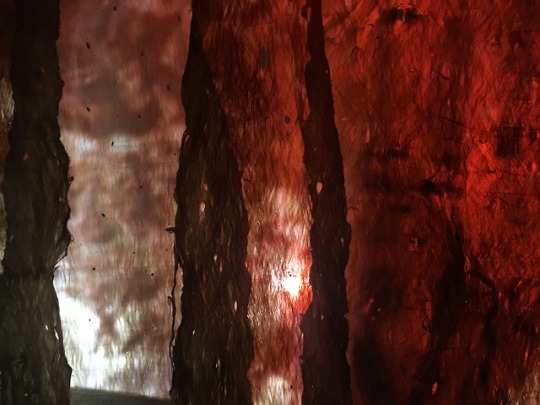
Working with Kokowai
According to Maori Marsden, the Māori world of symbology is a mode of interpretation that helps us to understand and make sense of the physical world as well as its various esoteric layers that make up the holistic Māori world view. “The Ancient Māori seers like the later modern physicist created sets of symbols to provide them with their maps/models to portray each state in [the] evolutionary process. These representations were the means by which they could apprehend/grasp/reconcile the various worlds; and grasp what they perceived as ultimate reality.” His explanation is a useful way of explaining why using certain materials convey layered meaning beyond their physical attributes. Kokowai, red earth, contains an inherent meaning beyond its physical function as red pigment. In my work kokowai acts as a symbol that encapsulates our creation narrative. This earth and its red colour alludes to the vulva of Papatuanuku, where her sexual procreative power lies. It represents not only our earth mother but our creative bodily fluid. “Symbols are the deliberate creation of the human mind. They are an indirect reference to some other reality, a representation of it. They are the means by which the mind creates maps/models/formulae as a means of representing/grasping/interpreting/reconciling/integrating the different orders of reality” (30).
The deliberate use of this raw material therefore contains many layers. Working with kokowai I have found there a multitudes of ways this material be documented, captured or used in away that allows its essence to be conveyed.
1 note
·
View note
Photo
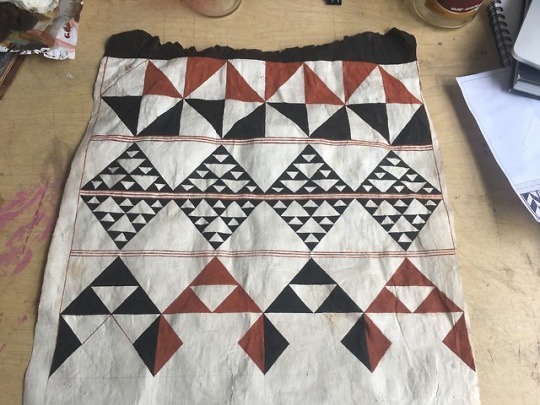

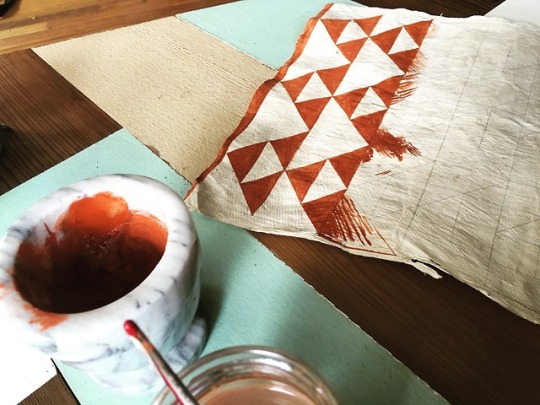
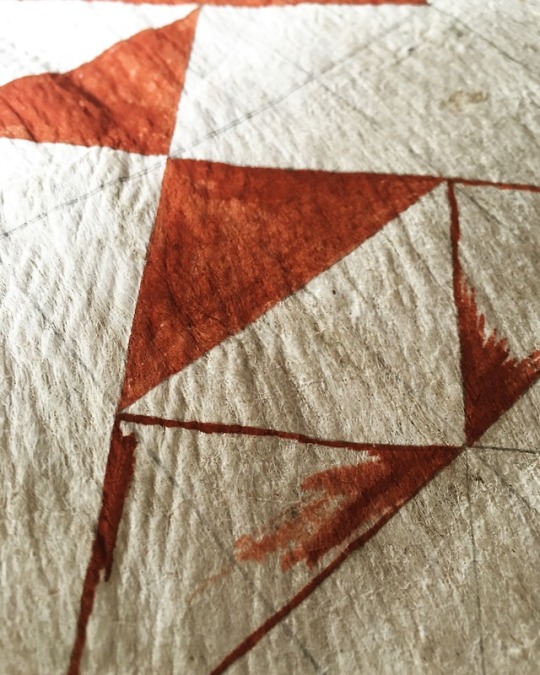
Kokowai from Aotearoa and alae from Kaui dance together on this barkcloth. Wauke from the west side of O’ahu. I make my first Māori designs on kapa, the first in hundreds of years.
Te Wheiao
Sickenly slow Progress is Relative Equilateral triangles I paint wombs and fill them with blood Not sons or daughters Yet but earth whispers planting epistemologies to cushion te wheiao All knowledge comes from darkness all men come from our wombs
1 note
·
View note
Photo

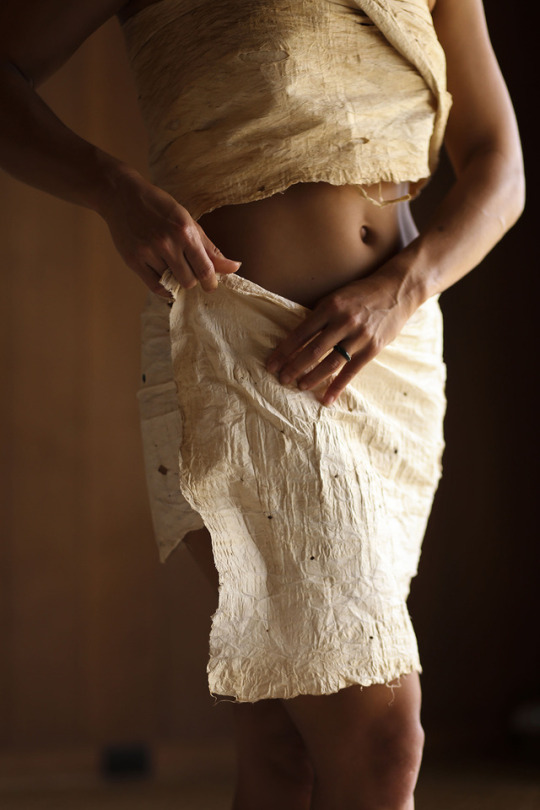
I can’t get this quote out of my head ever. Colenso William arrived in Aotearoa in 1834, he was a missionary and printer. He noted the “thin white bleached paper-like bark contrasting excellently well with their ebony locks!” (qt in Neich 1996 111-12). See above for the 2018 version of this striking contrast.
“Moving into a new phase. Aute transforming me. Gifting the power to move, dance and be. We are like this barkcloth. Interwoven. Beaten down to expand. Pressed and impressed. Diverse and contradicting. I dance between the puka. The spaces between. Defining the undefinable.”
I felt the need to wear it. To use the aute for its ancient purposes: in my hair, around my waist and bust, to move fluidly within it, be supported by it and soften its fibres through wear. Its hard to say when play became performance, a practice of movement, fluidity, exploration of body and material. I didn’t have a plan, I allowed the material to guide my movements. It was slow and ceremonial, testing the materials limitations as it was wrapped around my body
“Within the Pacific Sisters I developed an embodied practice, representing atua and ancestors from the past to retell our oral histories. We would adorn the body using craft techniques handed down from our relatives and shared with each other. Fusing them with modern materials, bringing them in the present. It was here I started to use my own body to ‘talk back’ to the familiar trope of the Dusky Maiden. The Pacific body has been shaped by 18th century notions of paradise. The Pacific has been constructed as an ‘Island Paradise’, inhabited by the free-and-easy Dusky Maiden and the at one with nature Noble Savage. This was replaced when the missionaries were sent in force, bringing with them brimstone and fire to save the savage soul from everlasting life in hell. It seems we were not fit for heaven with our tattooed bodies and heathen ways; it was our bodies and what they performed culturally and aesthetically that they sort to eradicate.” - Rosanna Raymond in The Body of VA’rt
2 notes
·
View notes
Photo

Self-portrait with Siapo - by Rosanna Raymond
“My body has become a powerful space for my art practice and cultural heritage to come together, the past and the present converging in the NOW. My body has become a site of resistance, actively privileging my Moana self, allowing me to traverse the genealogical and geographical space, collapsing time, bringing together a place for me to manifest the ancient and the modern self-creating works of VA’rt.”
“Anglo/Western notions of what art is divide visual and performance art, but many Moana artists combine visual, performance and ceremonial aspects in their work. Engaging with the Western contemporary art worlds has been both detrimental and advantageous to many practitioners from the Moana. It has allowed us to add to the narratives of our heritage based practices. BUT it has also kept us firmly on the outside of the predominant Anglo/Western definition of what art is, and can be”. 24-25
Glass Walls and Dark Seas by Raymond
“In the dark, in the sea a waka is flying over the water Surging through white noise lilting heavy with the wind I am the dark … the long night …. the void … I am limitless potential Untethered … volatile …….. as deep … as I am long I will envelop you ... imbibe you … bind you lash you to the prow of that waka Do not stare at the sun do not stare at the chiefs Stare at me … I am the night soaking up the light taking it for my lover devouring it fucking it I bear no cloth … no womb just the entrails of Te po …….. washed in the sea
The gods will follow they won’t touch and nor will you I am tapu … unbound ... untouchable Only food will clear the way prepare your feast Stare as much as you want these bare breasts are not for you I am here not to startle your desire but to render you noa …… as you walk amongst the gods My naked body clothed for ceremonial exposure Look but don’t touch … well you can’t They have built a wall ... it is glass containing the past”
– Rosanna Raymond
Week 5 | Transgressing Bodies | Identity #blog5
2 notes
·
View notes
Photo

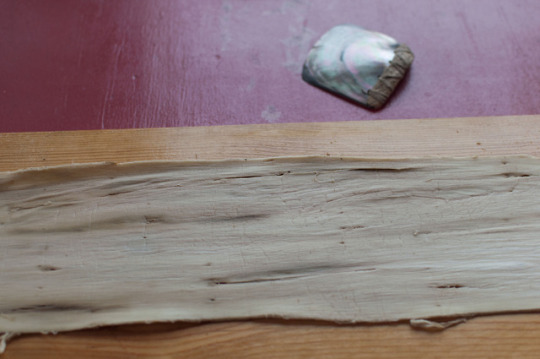
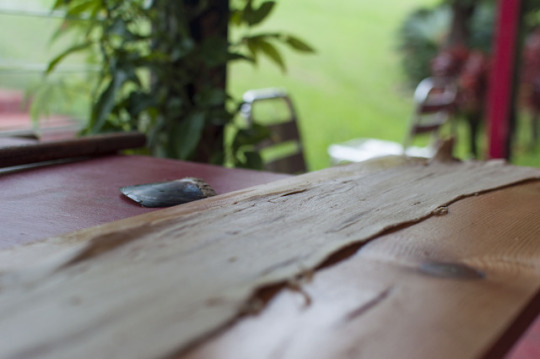
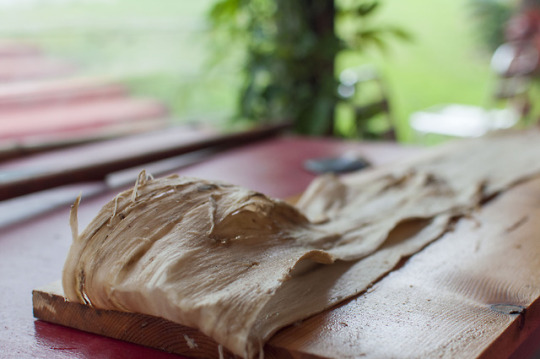
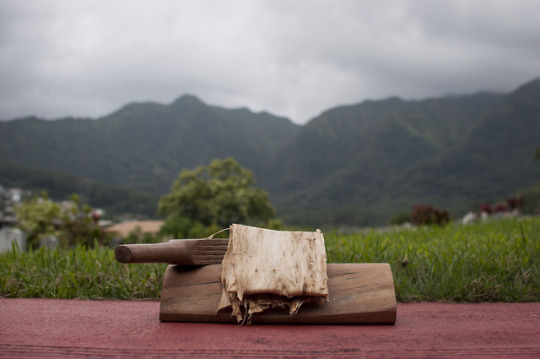
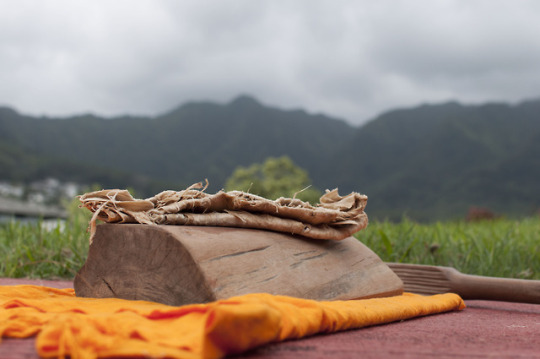


Photos of the Process
Hiki no o Mānoa Aunty Verna’s Kapa group
Weaving throughout the Pacific embodies intergenerational knowledge, histories, and stories of interconnection. Weaving is incorporated into architectural contexts, clothing and bodily adornment, sail making and boat building. It is also one of the most powerful Pacific metaphors, seen as a way to connect people through envisaging fibre as ancestral hair, the twining and twisting action as the physical binding of people and their procreative potential through time and space.
Thinking through material, technological, and metaphorical meaning.
Woven Universe | Week 6 | #Blog6
1 note
·
View note
Video
vimeo
Culture For Sale | Identity Gender and Performance
“In August 2011 performance artist Shigeyuki Kihara travelled to Germany with the support of the Visitor's program from the Goethe-Institut to investigate museum archives held across Germany to research materials related to the German administration of Samoa from 1900 till 1914.”
I found this artwork incredibly moving and direct. It works both as a live performance and installation where you insert 20c coins into a slot machine and a dancer on screen/ in real life spring to life like a wound up monkey and dances for the audience. It highlights the monetary exchange for culture, culture as a spectacle, culture as something that can be bought and that is commodified today by tourism industries. It is so interesting watching this video and the people’s responses, they are really buying into this experience of watching the dancer on the plinth dance for their pleasure for their 20cents. It questions the value we place on culture. It is poignant hearing the perspective of the dancers, how it made them feel: “exploited” and “chlaustrophobic”. When interacting with this work the audience is forced to be that voyeur, even if you are culturally aware, how would you navigate this work respectfully. I can’t see a way out. It forces you to be hypercritical of our culture of monetising cultural performances.
#PACS303 #Blog3
0 notes
Photo


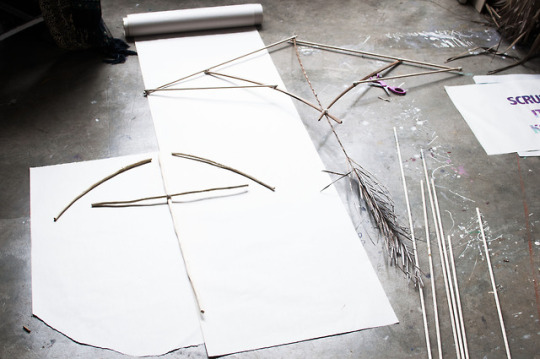
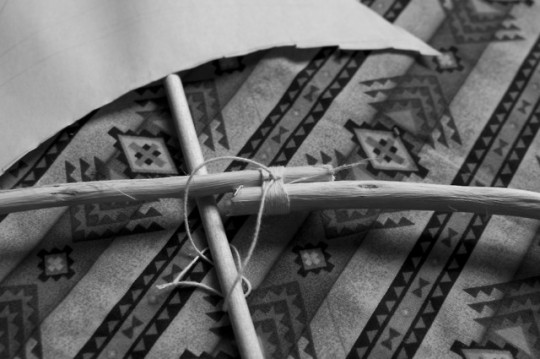
Studio check in Spring 2018
I’ve put my kites on the back burner because yesterday I harvested wauke, I need time to process it. Pictured at the top are the scraping shells with serrated edges. I get blisters when I scrape. Eventually, I suppose I will harden and form callouses. The second image is a painting with natural pigments on a section of Hokule’a’s sail from her 1999 voyage to Rapa Nui. A strand of lace bark hangs off the painting and a vine. Lashing: I learned a few knots when I sailed on Hoku while she was in Aotearoa, I also learned a few tricks from Rangi Kipa. I wish I could lash up all my ideas this neatly and plop them in my essay in a linear, simple way.
I am trying to write about mauri... how does one write about a feeling, about something that has no English equivalence. I keep trying...
1 note
·
View note
Photo
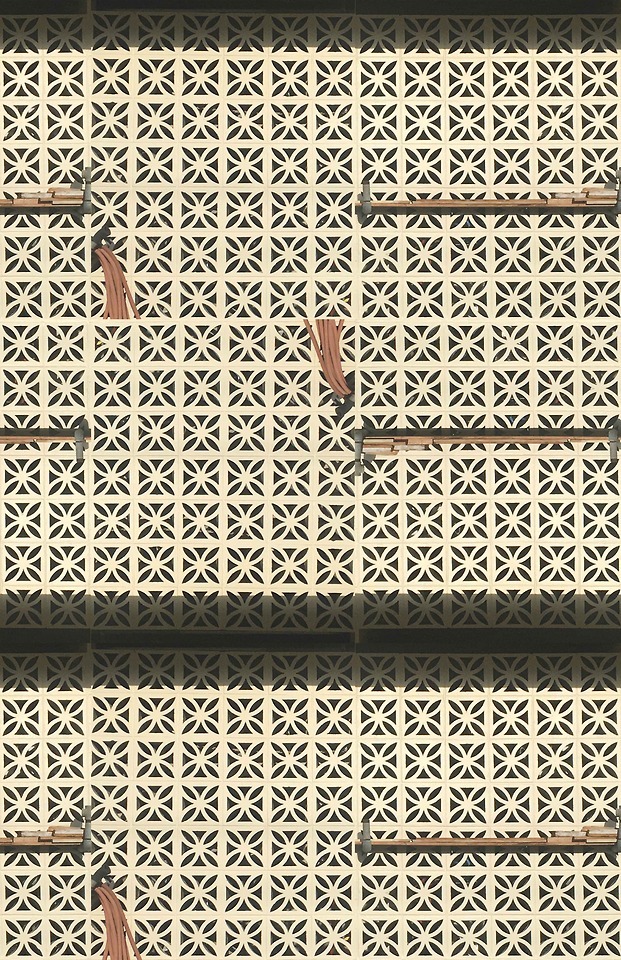
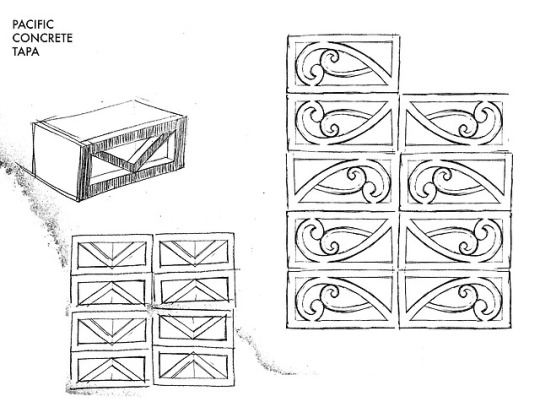
Concrete Kapa | Pacific Spaces
How can I determine pathways, navigation within a space? How can I decolonise a space? What are the little differences that drastically change how we feel within a space? How do Polynesian people inhabit houses, make homes that are distinctive? Unconsciously pacific.
I take my shoes off at the door. Family portraits clutter the walls.
What else?
How concepts of space, social organization and ritual might inform the design, structure and utilization of materials. How do buildings embody cultural values, perceptions of life and death, the sacred and profane or genealogical and cosmological perceptions of the worlds Pacific people inhabit? What examples might we bring into this discussion and what kind of structure or structures might we envisage for a performance, an exhibition, or a future Center for Pacific Islands Studies?
(PACS303) #Blog2
0 notes
Video
vimeo
vimeo
We are like this bark cloth.
Interwoven pulled this way and that beaten down to expand folded to unfold pressed and impressed diverse and contradicting
Puka in places but altogether hole Hawaiian 'ohe kapala print on Fijian masi by Māori girl
Layers on layers of overlapping time space people all accumulating here on this piece of cloth before me
It's all soaking in like this red earth alae to my skin
Infinite fibres like pathways with direction
defining the undefinable moves minds and hands grasping deep sleep to dream the unimagined to imagine the unconscious way
I look at this landscape this landscape is us
Its all soaking in like this red earth alae in my skin
0 notes
Photo

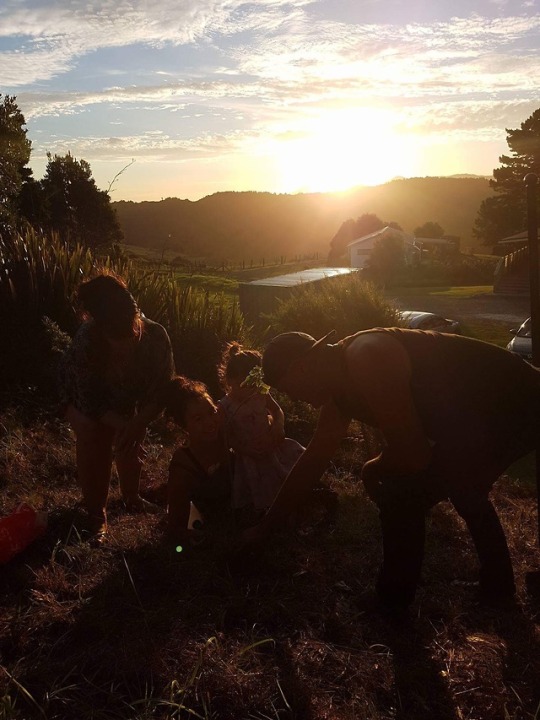


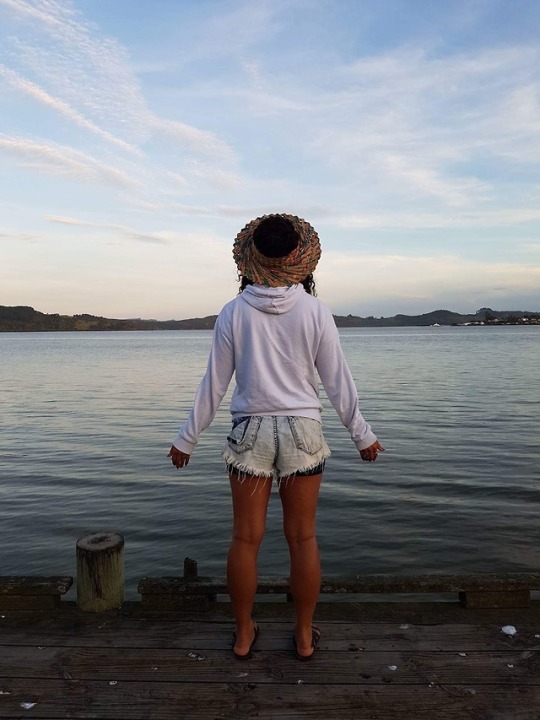
I love my niece, her name is Ahurei Te Ao Karere Harris. Ahurei means special and unique, Te Ao Karere is our grandmothers name and Harris is our family name. She is my eldest niece, I now have another niece Ariana and a new nephew Hemi. Our little tribe is growing and often I think about the world they have been brought into and how I can make them feel safe, secure, loved, confident and passionate about their culture and their identity.
Ahurei gets to grow up in our haukainga, close to the marae surrounded by the undeniable force of our Hokianga moana and dense ngahere power. When I was up home this last month, Jan 2018, I felt very grateful that my aunties and uncles and father lived on the land. The land my father grew up on, his father before him stretching all the way back to Tupoto. Our homestead was pumping with life, the aunties were in full swing, my wee cousins no longer wee and tamariki running around.
Seeds (diary entry on the day)
I planted this wauke//aute plant at my papakainga together wiith my mum, dad, brother, my tane a Te Kuru and my niece. It was special. We planted seeds for the continuation of our autonomy in Motukaraka. Ko tenei te timatanga o Te Uru Aute mo ngā uri whakaheke. Kei te whakatō mātou ngā kakano kia puritea matou, ngā uri o Tupoto, ngā mahi taiao o to matou matua tūpuna. It really struck me this time when I went up home just how lucky I am that my whanau still breath the same air of our tūpuna. With the next generation coming through I appreciate the warmth and safety of home.
1 note
·
View note
Photo
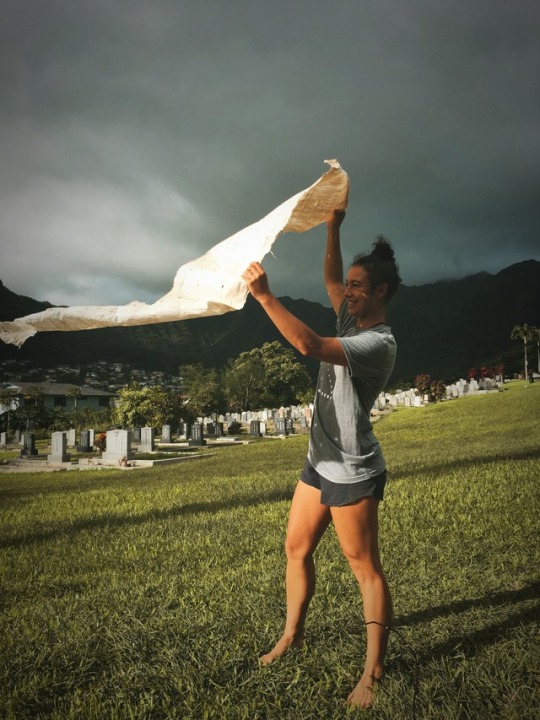
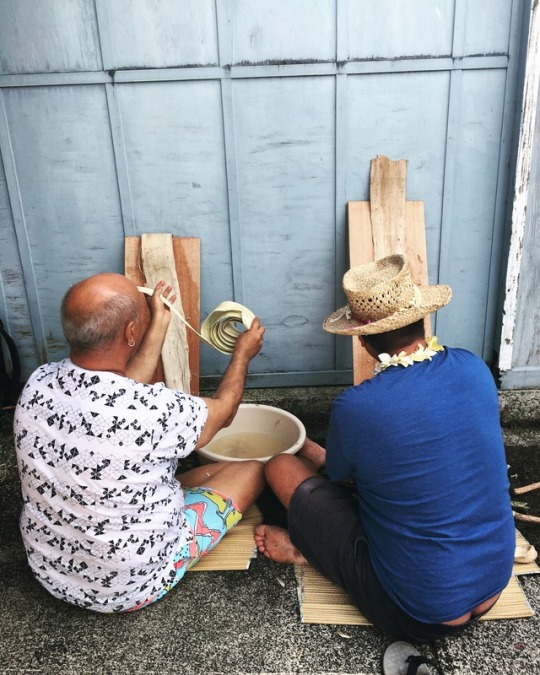
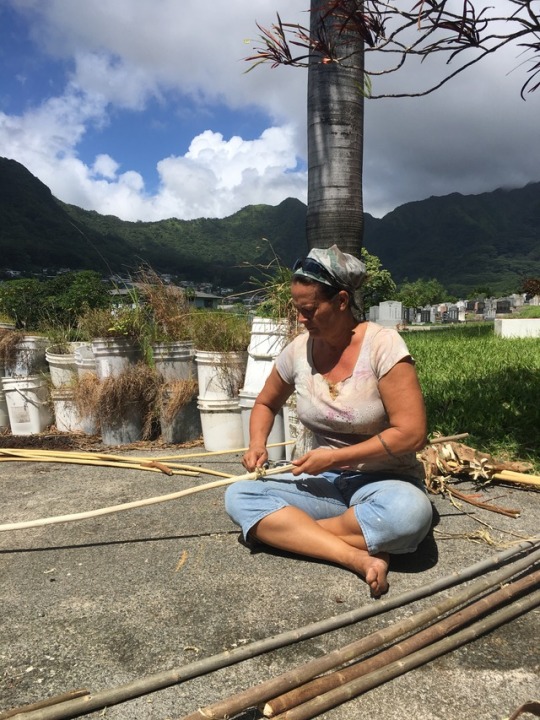
Pictured above: Me examining my first piece of “fresh beat” wauke, a process I learned on this day from Wes Sen in our monthly wananga under my Kumu Verna. The wonderful Kumu Auli’i and Uncle Wes demonstrating scraping against wooden boards with shells. Finally Master Kapa beater Dalani scrapping off the outer bark with a knife rather than using Uncle Wes’ technique of peeling off the outer bark, Dalani prefers this method. It just goes to show every kanaka have their own moves in a highly elaborate process like making kapa.
The Fresh Beat Process
A method I learned from Wes Sen was what he called the “fresh beat” which was used for making maro, malo or clothing because it was fast and could be done in a day. (It isn’t feasible to wait a month for your malo.) This process involved stripping the outer bark off the inner bark by cutting a longitudinal line through half the thickness of the strip. You then peel back the outer bark and while resting the bark strip on your thigh you tug downwards separating the outer bark and inner bark. This process came naturally to me because of my experience making muka from harakeke. Muka is the very strong threadlike fibre that is used to weave out korowai (cloaks), ropes for lashing and all sorts of cordage. It was this material that essentially replace barkcloth in Aotearoa because its its durability and diversity. The leaves without the extraction of muka can be used to make flax baskets, hats, mats and much more, the possibilities are endless and artists like Shona Tawhiao continue to push this material to its limits, creating Avante Guarde gowns from it. When I first learned to make muka I was absolutely dumbfounded by how our ancestors came up with this process of extracting the inner fibre from the leaves. It became evident to be when stripping the outer bark f of the paper mulberry that Māori may have unlocked the secret inner silk of the flax plant through using this very same method. This hunch is of course only grounded in my experience with working with muka and expanding my knowledge of different processes around making barkcloth.
Returning to the fresh beat process after stripping off the outter bark you are left with a white inner bark. Instead of rolling this up and soaking it for two weeks in the fermentation process that I previously learned we placed it against a wooden board and used a cerated shell to scrape it. This process of scraping required lots of water. What happens is the sap within the inner bark is squeezed out, it is this sap that oxidises with the air and makes the aute turn brown. By squeezing it out of the inner bark you are ensuring that it remains nice and white. This process of scraping also widens the strip of bark sometimes by double or even triple the width. While the fresh beat technically takes less time, the scraping park is very labour intensive, and I can vouch for having very sore triceps the next day.
Once the scraping is done, you change shells to one with a file like texture. Using this new shell you push the edges outwards to expand the strip as far as it goes, while trying to ensure it the strip of wauke remains parallel. You then the squeeze all the water out of it with the dull edge of a flat shell. In Samoa they layer these wide strips of scraped wauke on top of each other before beating. I suppose this would have been done when making bulk tapa, in my case, due to the limited resource, I was only making one or two strips. The advantage to beating multiple pieces at once is you save time beating but also, the more layers there are, the more cushion between the fibre, the impact of the beating is softened and distributed through the fibres allowing the wauke to become thiner. When beating you pound with a lot of force. As well as hitting with downward force your are also sending energy outwards as you are simultaneously expanding and thinning the bark. This is where the true transformation takes place, the force of beating really stretches and softens the fibres. When the piece becomes a long thin strip, you take both ends and roll them towards each other until they meeting creating what look like a cinnamon roll. You then hit down, on both ends and this loosens the folds. Then you unfold the bark to reveal a flexible, damp, white/beige fibrous cloth that can be up to six times the original width of the bark. Drying is also important, the piece needs to be flat and stretched with stones weighing it down.
This fresh beat process really transformed my perception of making tapa cloth, while physically demanding, the ability to beat immediately is exciting. There is less guessing when it comes to fermentation, a process I often found difficult to judge. Squeezing out all the sap prevents discolouration that can sometimes occur. The smell of the freshly beaten kapa is beautiful also. The possibilities seem endless and I cannot wait to push this process when I get my hands on a few more plants.
Ngā mihi mutunga kore ki oku Kumu pai rawa atu me ā Uncle Bruce mo tona whare haumaru.
0 notes